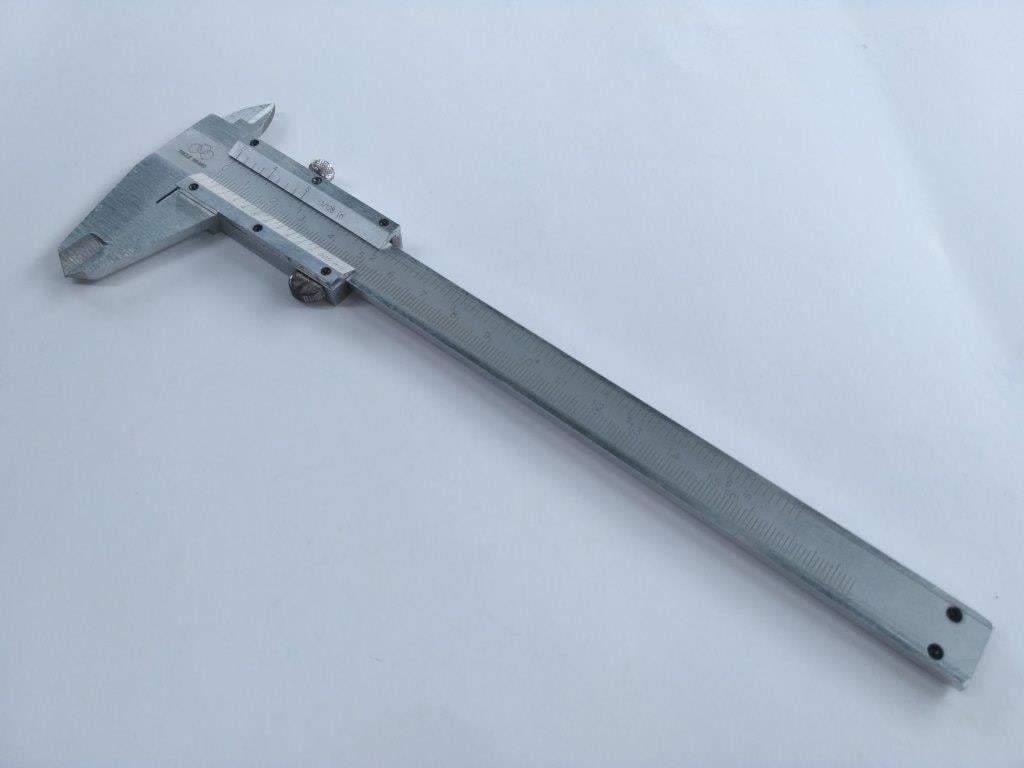The vernier caliper and other types of caliper that we use today have passed a long story before. Some say it was from East, some say it was from West. Each of them has their own argumentation. Starting from the old-style without vernier scale, now, it becomes vernier scaled. Even, they have transformed into a digital measuring instrument that can transfer the readings wirelessly.
Disclaimer: The caliper history that we post on this page may be debatable. We may mistakenly write the wrong history. Submit your feedback.
First Sliding Instrument Called Nogisu
The first traces of caliper lead back to the Chinese Yin era where a sliding measuring instrument was used. This measuring instrument consisted of two jaws and sliding scales. It was known as “Nogisu”. This was originally made of horn, bone, or mammoth but later it was made with glass, wood, or iron.
Nogisu is a Japanese word but it doesn’t really sound Japanese. Nogisu has derived from another word known as “Nonius” which means the division of the main scale into smaller increments. The word Nonius came from the German language and most Japanese words are derived from the German language.

Nonius derived from a Portuguese is known as Pedro Nunes. Nunes made a remarkable invention that was then used for further modification. He invented the “Nunes Scale” which improved and modified the accuracy of inclinometers used by astronomers and astrologers. Nunes scale consisted of equally divided arcs, each of the arcs had one less division than the one that was outside it.
The Invention of Vernier Scale
Nonius and vernier were similar in Germany even though the invention of the vernier scale was made by French Pierre Vernier. The vernier scale was named after him because of his tremendous invention. In 1580-1637, Frenchman Pierre Vernier invented the vernier graduation scheme. The vernier calipers were already being used but the Frenchman added the vernier graduation scheme to an ordinary caliper.
At the beginning of the industrial revolution in Britain, the scabbard type sliding caliper was introduced which consisted of the main scale and one of the jaws was moveable and it could slide inside the sheath which covered the outer of the caliper. This simplified form of the vernier caliper was popularly known as Nogisu.
Another Thought It was Invented in the US
There is another thought process that believes that the vernier caliper was invented in the US. It is said that J. R Brown, a leading mechanical engineer and the founding father of Brown and Sharpe, invented the machine specially designed for automated linear graduations in the year 1850. However, this machine that was made for automated linear graduations was then used to manufacture a vernier caliper in 1851.
During the end of World War II, there were two main types of calipers. One was the scabbard-type sliding caliper which consisted of the main scale and main scale graduations. The other one was the classified caliper that consisted of the vernier scale and divisions as well. The sliding caliper that was made with vernier divisions was used in 1840 and before, its origin is from France.
Since the sliding calipers with a vernier scale and graduations had the ability to take the measurements very accurately, they were used in a lot of mechanical-related works. The simplified caliper and the sliding vernier caliper were found to be around parallel in the 1940s in the Mitutoyo Museum.
Both the types of calipers, whether the simplified caliper or the sliding vernier caliper were described in the catalogs of a popular company known as Brown and Sharpe Mfg. Co in the year 1924-1985. The L.S Starrett Catalogs also consisted of sliding calipers.
Summary
The sliding calipers with vernier graduations were derived from the simplified calipers which consisted of only a main scale. They didn’t have vernier graduations. The simplified calipers were further modified and they included vernier scales.
In Germany, in the year 1905, the simplified calipers with only a main scale were used. The maximum value of the scale was 80 mm. Various countries started manufacturing simplified calipers. Brown and Sharpe Mfg. Co was manufacturing simplified calipers in 1924. On the other hand, L.S Starrett Co. was manufacturing simplified calipers with different ranges in 1927.
The oldest caliper with a vernier scale was made in 1840 in France. All the vernier calipers were first made in France which means that France had a lot of advancement in manufacturing calipers. The vernier calipers had metric (millimeter) graduations on the main scale and vernier scale. Different vernier calipers have different ranges and they were used for a variety of purposes.
The modification of Nogisu, lead to the development of the modern vernier calipers that we use today. Then caliper history continued to the more modern world. The other types of calipers show up to the market such as dial caliper and digital caliper, adding more caliper history at the moment.
Source:
